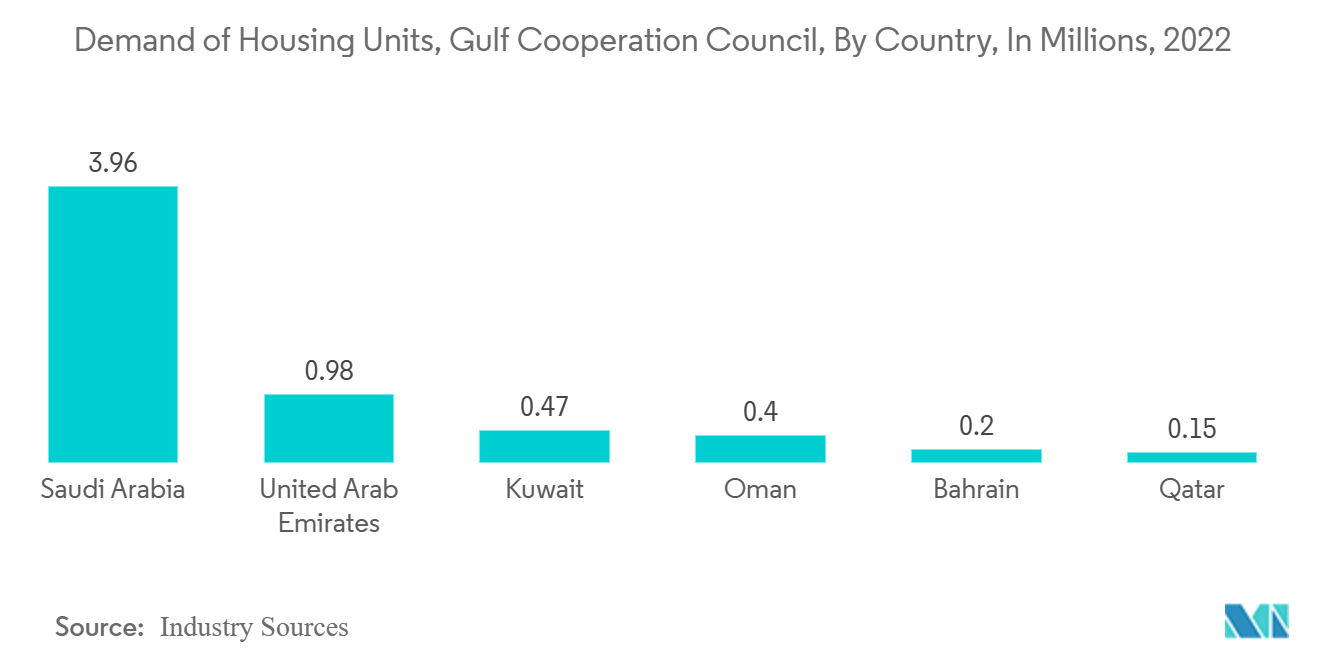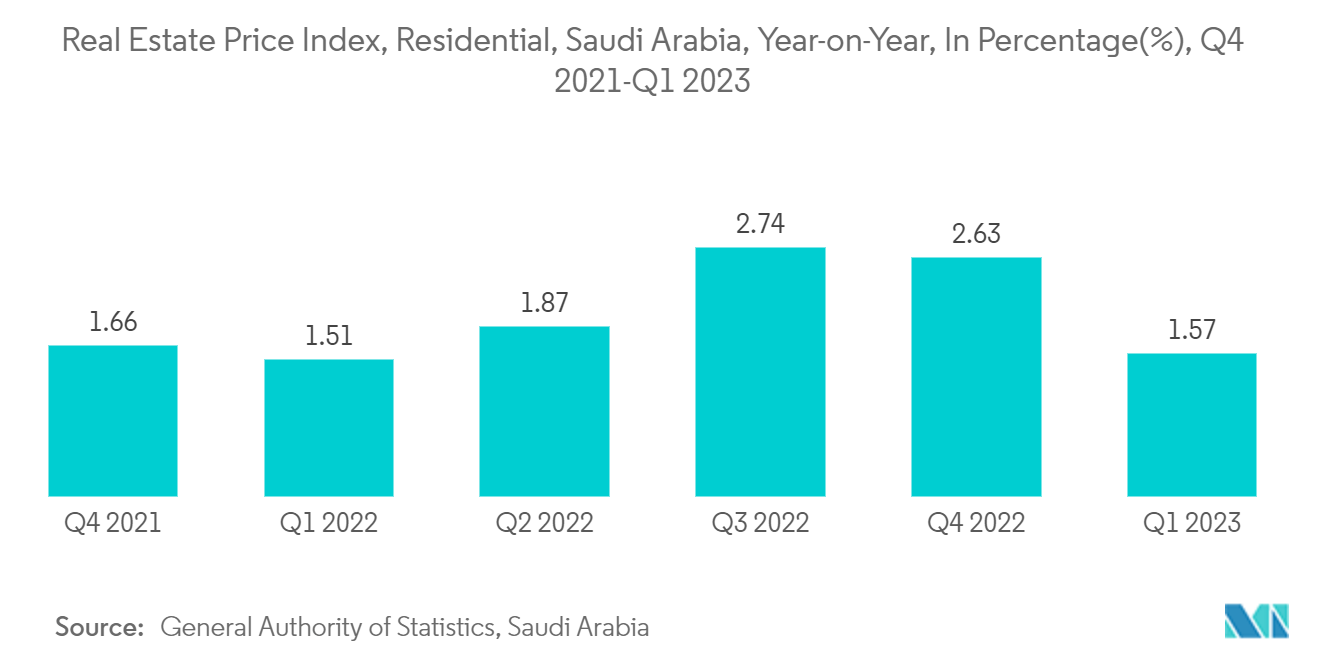Market Trends of Saudi Arabia Residential Construction Industry
Increasing Home Ownership Driving the Market
- Saudi Arabia's housing demand is expected to rise by more than 50% by 2030, reaching 153,000 dwellings from 99,600 in 2021. To reach a housing stock of 4.96 million houses by 2030, the Kingdom will need to build approximately 1.2 million new homes over the next decade. In the last decade, Saudi Arabia has made remarkable progress in transforming its housing sector. By 2030, the Kingdom is expected to achieve its goals of 70% home ownership and a housing sector that contributes 8.8% of the national GDP. The government's robust policies and initiatives, including the activation of numerous financial products, are propelling the sector forward, addressing the housing market's key challenges, and making homeownership more accessible for new generations of Saudi Arabian people.
- Addressing the barriers posed by a high mortgage interest rate environment, the financing dimension directly addresses the issue of unaffordable housing through several number of government-backed initiatives. Access to long-term financing solutions remains critical, with the Saudi Real Estate Refinance Company (SRC) injecting more than 6.5 billion Saudi riyals by the end of 2020 and plans to refinance 20% of the Kingdom's residential mortgage market by 2025. The Saudi Central Bank has also played an important role in the sector's growth, with minimum down payment requirements for property purchases reduced from 30% to 5% of the purchase price and the number of banks offering home loans increasing. Aside from improving access to finance, the Kingdom has continued to increase the private sector's involvement, particularly in developing affordable housing.

Increasing Investment and Government Projects Driving the Market
- Improved governance contributes to the stabilization of the rental and buyer markets in real estate, which is aided by initiatives such as "Ejar," which governs the relationships between all parties involved in the rental process. The transformation of the Saudi housing market also focuses on improving beneficiaries' journeys. This dimension is critical for addressing low levels of customer satisfaction and includes several key initiatives such as the 'Mulak Programme,' 'Shrakat,' and 'Sakani.' These initiatives strengthen the government-private sector partnership to provide solutions and residential products that meet the needs of citizens at an affordable price, as well as to digitally enable Saudi homebuyers to apply for their first home online.
- The housing sector in the Kingdom's Eastern Province is currently receiving generous support. However, because providing suitable housing for residents is one of the leadership's top priorities, this support is more than justified. This is especially true as part of Saudi Arabia's ambitious Vision 2030 Housing Program. The housing program is critical in improving housing accessibility for Saudi families, both financially and in terms of overall feasibility. The project's second phase was launched for the Al-Wajiha suburb. Al-Wajiha is one of Saudi Arabia's largest residential suburbs, spanning more than 9 million square meters. The project will house over 27,000 people across 5,400 housing units within this large area.
- In Saudi Arabia, sustainable real estate provides investors with the opportunity to make a real difference in the world by investing in a greener future. Many businesses and industries are beginning to invest in green infrastructure as the world becomes more aware of the need to adopt sustainable practices. The real estate industry is no exception, with sustainable development becoming a key trend in new construction projects. In recent years, Saudi Arabia, in particular, has made significant investments in sustainable real estate development. Green buildings are seen as an important part of achieving the country's goal of using renewable energy for 15% of total power needs by 2030. As a result, the number has increased significantly of LEED-certified (Leadership in Energy and Environmental Design) projects in Saudi Arabia over the past few years.


